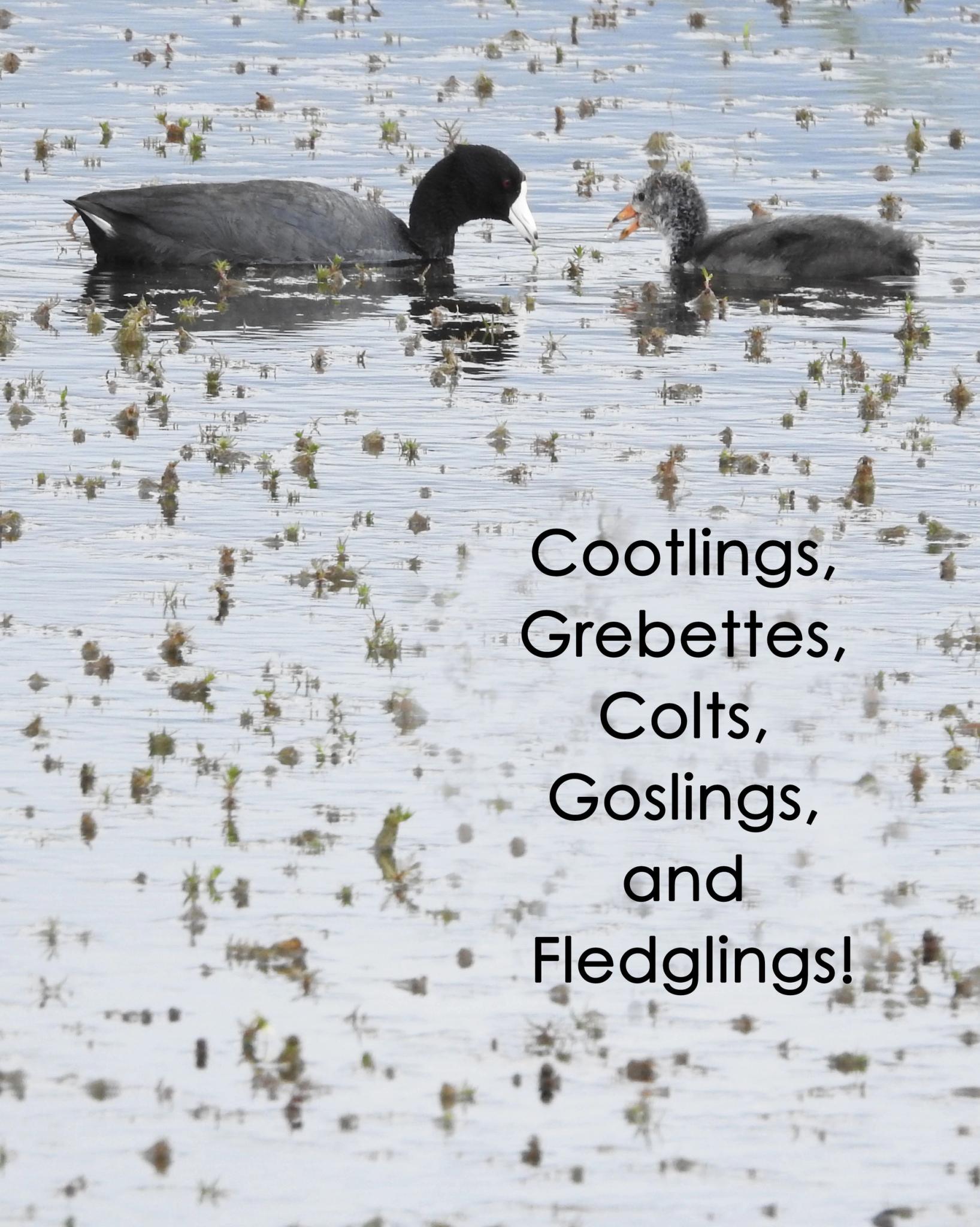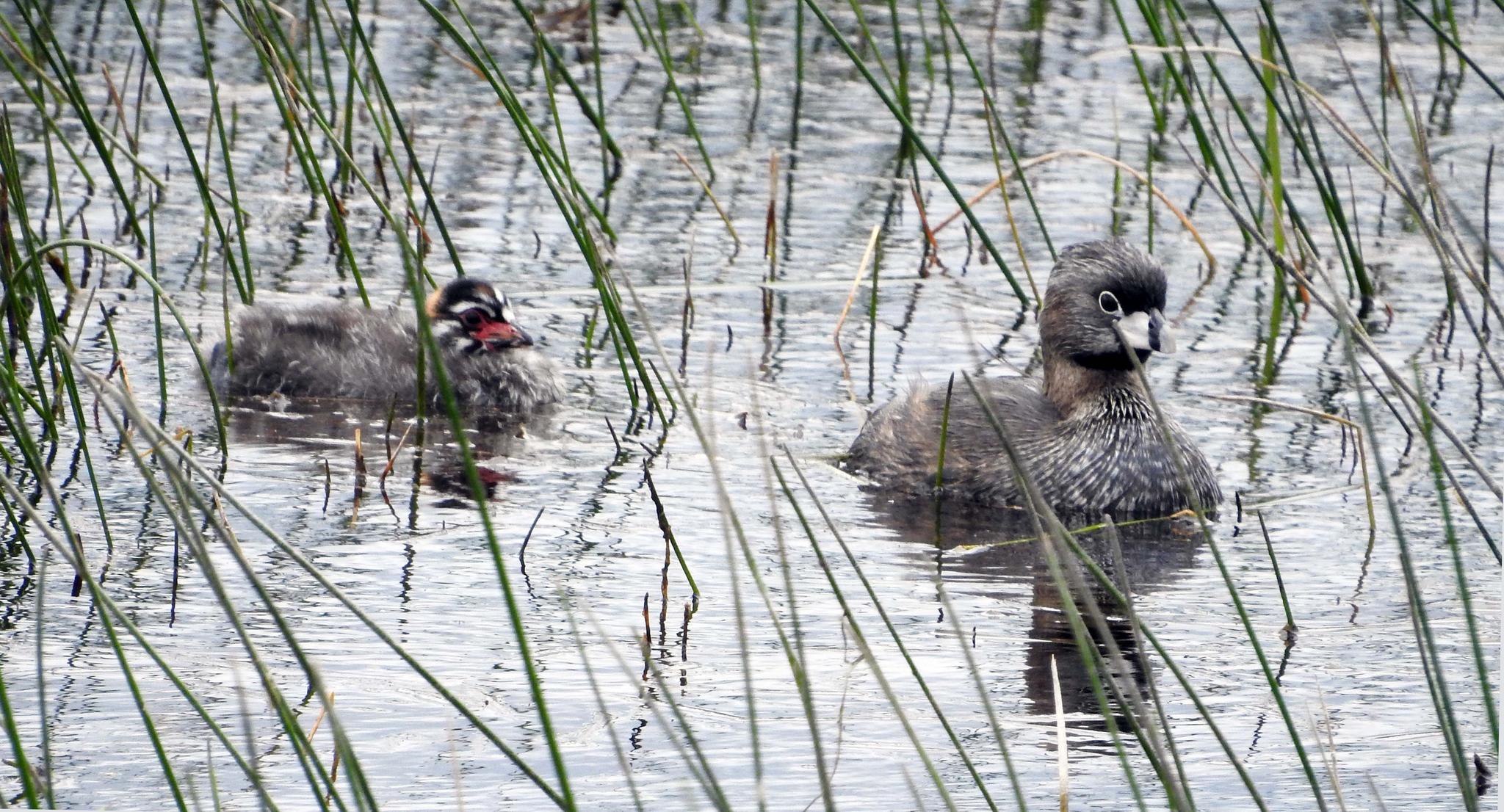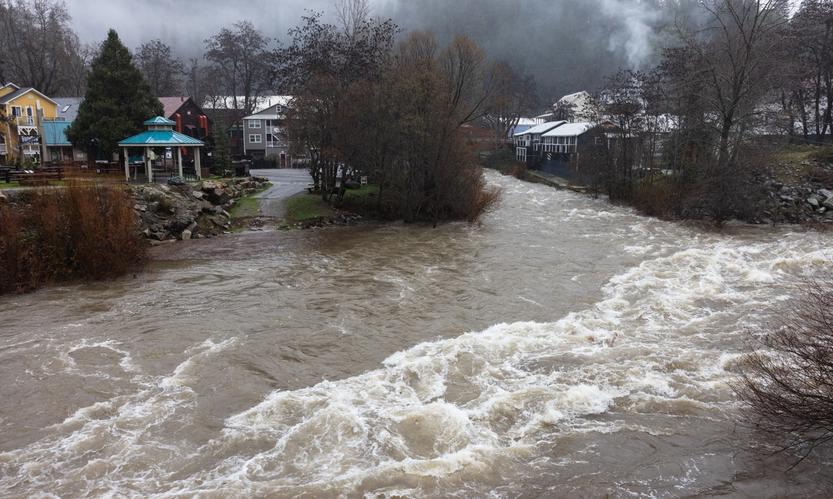
American Coot and cootling — Fulica americana
Baby Birds are showing up everywhere!!! I’ve seen them in Sierra Valley as well as in my neighborhood! There are a wide variety of names for baby birds, such as cootlings, grebettes, ducklings etc. In general, right out of the egg, newborn birds are called “hatchlings.” Except for waterfowl most hatchlings are altricial, or born in an undeveloped state, and require care and feeding by their parents. Baby birds that are raised in a nest are called “nestlings.”
However, waterfowl hatchlings are precocial and usually leave their nest, swim, and dive within a day after they hatch from an egg! These “fledglings” stay with their parents for approximately 80 days. When they are quite young, they often return to their nest to sleep at night. The parents continue feeding them for about a month, protect them from predators, and teach them how to survive!
Two weeks ago there were lots of brightly feathered baby coots, or cootlings, in the area of the Steel Bridge. I revisited these wetlands three times this week and the cootlings are still there, but their plumage has changed! They no longer have the brilliant ruff of yellow and orange downy feathers, are no longer bald, and their beaks are not bright red anymore! They’ve changed so quickly in such a short time!

American Coots (juveniles) — Fulica americana
In another couple of weeks they will probably look like the young American Coots pictured above. 75 days after they’ve hatched coots are able to fly. When they are about 80 days old their parents drive them off from their natal territory!

Pied-billed Grebe and a young fuzzy grebette! — Podilymbus podiceps
On another visit to the Steel Bridge area I was delighted to see a Pied-billed Grebe with five grebettes!!! How Cool!!! Apparently these Grebes are not as precocial as other waterfowl when born. The following information about these Pied-billed Grebes is from the Cornell website https://birdsoftheworld.org.
“Behaviorally more like altricial species. Can leave nest soon after hatching; but chicks are carried on adult’s back and brooded extensively during first week after hatching. Chicks move from nest bowl to adult’s back <1 h after hatching, while still wet or after drying. Climb onto back of adult beside or over adult’s tail. Young are brooded on back under adult’s wings on platform or water; brooding ceases after 3 wk. Parent forms pocket for chick by holding wings tightly to its body, spreading secondaries, and lifting scapulars. By end of week 1, spend about 50% of the time sleeping, in posture similar to that of adult. Time spent in water gradually increases from 10 min/d in week 1 to day and night by week 4. By day 28, young feed themselves small food items. Nest use stops between days 24 and 42. Young are independent 25–62 d after hatching.
First swimming posture is very low in water; hold wings and feet straight out to sides until day 5. Use feet alternately, rapidly, in horizontal plane. Dive feebly from few hours after hatching if chased, regularly by day 8. About day 10, escape reaction changes from climbing onto adult or nest to diving. Diving, including crash-diving, is instinctive by week 4.
On days 8–10, chicks start chasing live fishes and insects; make first successful catches between days 10 and 12; steadily improve after that. They feed them selves independently by 28 days. Lose interest in food after dusk on days 32–34.”
Your questions and comments are appreciated. Please feel free to email me at northyubanaturalist@gmail.com. Thanks!
Featured Articles

Storms Bring Heavy Rainfall and Local Disruptions →
December 22, 2025
Sierra County faces power outages and water issues amid heavy rainfall and storm warnings.
215 Animals Seized for Cruelty from Grass Valley Property →
December 22, 2025
Human Remains Found Near South Yuba Bridge in March Identified →
December 17, 2025
Transfer Station Burn Suspended After Community Concerns →
December 16, 2025
Sierra Hardware Plans Extensive Repairs After Flood Damage →
December 8, 2025